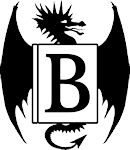Written in Bone: Hidden Stories in What We Leave Behind
Sue Black
Arcade
Nonfiction, Anataomy/Anthropology/Autobiography/Science/True Crime
Themes: Cross-Genre
****
Description
The human body has more than two hundred bones, and we are born with more individual bones than we end up with as adults. Though all bones are marvels of engineering and evolution on a macro level (if not without failure points and potential flaws), they also record the story of our individual lives, from before birth until our deaths. Forensic anthropologist Sue Black, among the top experts in her field, offers a guided tour through the human skeleton, along with stories of how they have been used to identify remains and shed light on lost lives and possible crimes.
Review
The relatively recent long-running TV series Bones (a highly fictionalized take on the matter) and popular crime novels (such as those the series was based on, by another forensic anthropologist) have raised public awareness of the field, a more specific offshoot of general anatomy and forensics (the latter of which has long been of general popular interest in various media). This is Black's second book, but the first I wandered across and picked up based on the admittedly unscientific method of "there was a multi-book discount sale, I needed one more book to take advantage of it, and this one looked interesting". It happily turned out to actually be interesting, even to a marginally educated and minimally intelligent person like myself. As promised by the cover and opening, she walks the reader through the skeleton from cranium to metatarsal, from initial fetal formation to lifelong changes. Many also come with stories, from her own career and other sources, on what particular purpose they have served in identifying bodies or victims of crimes. Unlike Hollywood or other fiction, these stories don't always tie up in a neat little bow in twenty to forty minutes (plus ad breaks), with a victim and a suspect and a dramatic courtroom presentation that breaks the defense and ensures justice is done (until the writers get desperate for a storyline and decide they need a recurring nemesis character). Black's stories are reality, which is often fragmentary and lacking a dramatic arc or resolution, her involvement with the case limited to her expertise and not the actual tracking down of perpetrators, when there is a perpetrator to be tracked down; many involve simply identifying remains of those who passed from natural or undetermined causes. Some stories are tragic, some are even amusing (more the living people involved than the deaths, of course), and Black's writing can take some witty turns. At several points, she refers the reader to her previous book, All That Remains; not having read that book, I was a little left out of those references, but overall this one stands on its own as an informative, accessible look at the human skeleton and how much information a skilled forensic anthropologist can extract from it.
